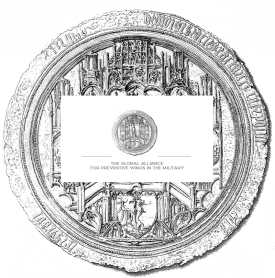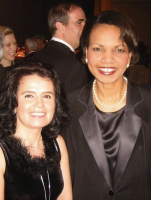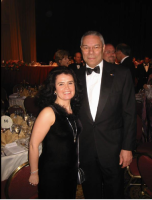Mozambique: the First Preventive Wings
in the Military in the History of Modern
Civilization
Mozambique, a long narrow country on the eastern shore of Southern Africa ( population 19,529,000 ), has long had a troubled life. Colonized around 1520 by Portugal, Mozambique was exploited f or its forced labor, sugar, and cotton. In this century, fascist rule created deep unrest in the Portuguese colonies. A guerrilla war against Portuguese rule began in 1962, finally bringing independence to Mozambique in 1975.
However, the new Marxist government was opposed by white industrialists outside the country, who in 1980 backed a right-wing resistance movement. The result was a long and bloody civil war that claimed 600,000 lives and displaced two million people.
In 1986, Joaquim Alberto Chissano became president and continued his predecessor’s policies of introducing a free-market economy. Nevertheless, the devastating civil war continued. A peace agreement was signed in 1992 and a United Nations mission was on the way, in spite of that, tensions remained high and fighting could easily have broken out again at any time. On top of everything, Mozambique, already the world’s poorest country, was suffering from the worst drought of the century, which had plagued southern Africa for two years.
The Unified Field Technology(TM Group effect)
Based Solution: Peventive Wings in the Military
In July 1992, President Chissano was visited by two scientists who at that time were involved in conducting large scale experiments with the Unified Field Technology Quiet Impact Groups (TM&TM Sidhi) - Dr. Kurleigh King and Dr. Carolyn King from the Netherlands. Based on the results of the statistical research with the Combined Impact of the Unified Field Technology, they presented a plan for the country based on statistical [P] Value, the guarantee of successful improvement of the performance of the population.In a predicted, short time the crucial social trends were statistically guaranteed to shift into a stable coherent direction in result of the Unified Field Technology Combined Effect: WHICH IS, IN FACT AND IN OTHER WORDS, THE RESULT OF A GROUP PRACTICE OF TRANSCENDENTAL MEDITATION & TM SIDHI TECHNIQUE. The Plan with precise [p] Values included two categories :
1/ to eliminate the civil war/stabilize peace;
2/ to improve the economy, increase employment
3/ to eliminate the drought (the ecosystem modification, which was also expected).
The plan, the research data, on both the Individual Impact and the Combined Impact of the Technology were thoroughly examined. President Chissano, top-level government officials and their families, first learned the Unified Field Technology basic and advanced version (the TM and TM Sidhi technique) themselves.
The Mozambique Armed Forces Joint Chiefs of Staff studied the plan carefully and critically. They made a decision to adopt it. The first Preventive Wings in the Military - the Unified Field Technology Quiet Impact Group in the military came to existence to modify the situation in the country using the cutting edge technology, The Unified Field Technology.
The training of the soldiers in the Unified Field Technology (TM & TM Sidhi) was done in challenging conditions, yet it was very successful. By February 1993 Mozambique had a 16,000 soldier Preventive Wing based on the [ELR 1%] MODEL, and a 3,000 soldier Preventive Wing based on the [ELR√1%] MODEL.
The Results
The Combined Impact of the Unified Field Technology took hold swiftly, as in the case of all the field tests before. One of the effects is invaluable: violence stops immediately. The Unified Filed Technology Quiet Impact Group (TM & TM SIdhi ) effect, the “Stop the Killing Impact ” is effective immediately. An astonished press began to report the changes. The New York Times, February 22, 1993, said:
“Mozambique has unexpectedly emerged as a candidate for an African success. story (…….). A ruthless drought (……) has been broken by quenching rains and the country is carpeted with corn. “We’ve got a combination of peace and rain, which there hasn’t been in Mozambique for a quarter of a century,” marveled Arthur M. Hussey III, coordinator of relief deliveries for CARE. “
Economic growth for 1993 was predicted to be 6% - yet it soared to 19% (on the field test research regarding more experiments
see The Method: Supplement to the Combined Impact, pp.60-73). Crime dropped 20% in the major cities of Maputo and Quelimane
– the reverse of what is expected after a war . On the field test research data on other experiments see page: In Peace: Variables
with [P] Values. The peace process stabilized, including free elections. In 1999 the New York Times wrote:
“Seven years after the guns fell silent, jackhammers are ringing, new hotels are rising, new schools are opening, and newly paved roads are rolling across the land.
The war-torn, once ravaged countryside is now lush with corn,
cashews and mangoes. Inflation has dropped to 2%, from 70% in 1994. The economy has grown an average of 10% a year since 1996. After years of relying on donated food, Mozambique now grows
nearly
enough to feed itself. Once a symbol of Africa's calamitous wars, Mozambique is now a success story."
(L.R. Swarns, The New York Times, December 3, 1993, A3
Historical material courtesy: Dr. Craig Pearson, M.U.M. Fairfield, Iowa, U.S.A.
the G.A.P.W.M. Scientific Advisory Board.





